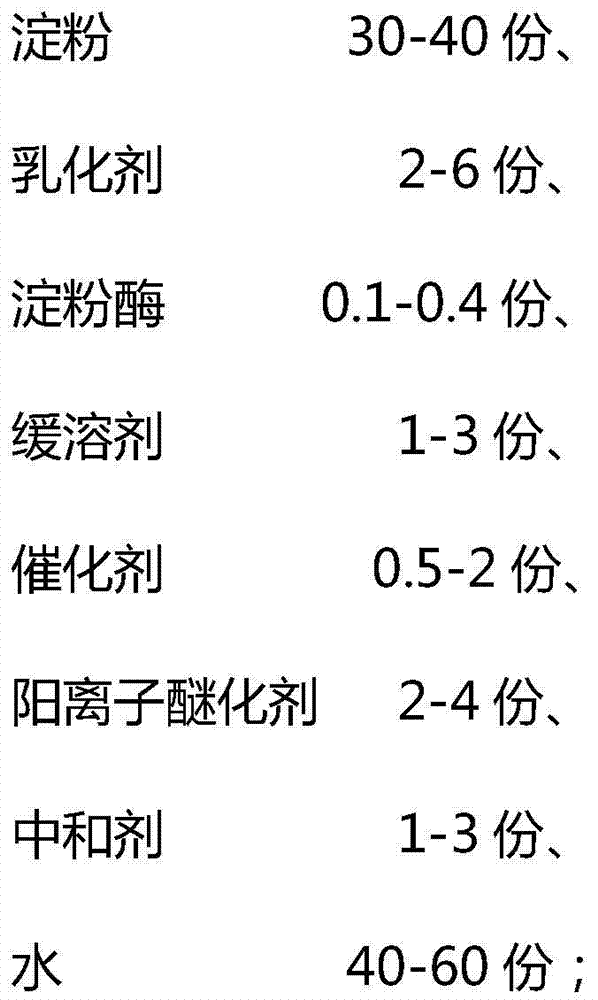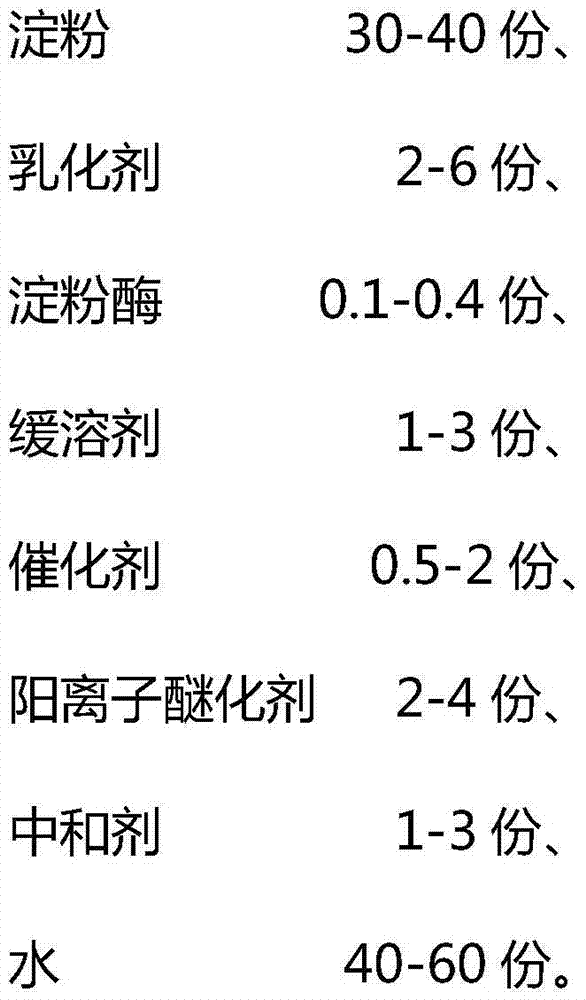Method for preparing high-substitution-degree cation starch emulsifier
A technology of cationic starch and non-ionic emulsifier, applied in chemical instruments and methods, chemical/physical processes, transportation and packaging, etc., can solve problems such as poor stability, achieve low cost, good water resistance and storage stability, and disperse good sex effect
- Summary
- Abstract
- Description
- Claims
- Application Information
AI Technical Summary
Problems solved by technology
Method used
Image
Examples
Embodiment Construction
[0021] The preferred embodiments of the present invention are given below to describe the technical solution of the present invention in detail.
[0022] Example 1
[0023] Add 185g of deionized water, 4g of sorbitan monooleate (Span 80), 1g of α-amylase and 100g of cornstarch into a four-necked flask equipped with a condenser, agitator, and a thermometer, heat up to 60°C, and keep warm 1h, add slow solvent anhydrous sodium sulfate 5g under stirring, add sodium hydroxide with a weight concentration of 32% until the pH of the solution is 11.0, add 10g of water to another beaker to dissolve 7g of 3-chloro-2-hydroxypropyl-trimethyl ammonium chloride, then added to the starch milk, reacted for 4 hours, cooled to 30°C, adjusted the pH of the system to 4.0 with hydrochloric acid, and the measured substitution degree was 0.311.
[0024] Example 2
[0025] Add 150g of deionized water, 10g of polyethylene oxide (20), 1g of β-amylase and 100g of cornstarch into a four-necked flask...
PUM
| Property | Measurement | Unit |
|---|---|---|
| degree of substitution | aaaaa | aaaaa |
Abstract
Description
Claims
Application Information
 Login to View More
Login to View More - R&D
- Intellectual Property
- Life Sciences
- Materials
- Tech Scout
- Unparalleled Data Quality
- Higher Quality Content
- 60% Fewer Hallucinations
Browse by: Latest US Patents, China's latest patents, Technical Efficacy Thesaurus, Application Domain, Technology Topic, Popular Technical Reports.
© 2025 PatSnap. All rights reserved.Legal|Privacy policy|Modern Slavery Act Transparency Statement|Sitemap|About US| Contact US: help@patsnap.com


